Ivo Zdarsky Is Waiting Out the End Times in His Own Utah Ghost Town
The Iron Curtain escapee, DIY aviator, and thriving entrepreneur is ready for anything.
Ivo Zdarsky does not talk a big game. He has a gentle, easygoing manner and a gap-toothed smile, with a staccato laugh and a soft voice. He pauses sometimes before he speaks, measuring his words, which are pronounced in a gentle Eastern European accent, a vestige of his youth in Czechoslovakia.
Zdarsky does, however, live in a big house. In an airplane hangar, actually, in Lucin, Utah, an abandoned railroad town of which he’s the sole inhabitant.
“I don’t like walls,” he says. “So half of it is a hangar, and the other half of it is a man cave.” The building is 100 feet by 50 feet, and the man cave is “just one big giant room” inside, next to a workspace and two airplanes: a Cessna Skyhawk* and an experimental craft that’s “like a helicopter and an airplane in one machine.”
Zdarsky spends most of his days alone, tinkering around with different pet projects—the helicopter-plane is just one of the things he’s constantly working on and thinking about. Recently he’s been trying to take the hangar and the man cave completely off the grid, to pull himself even further away from other people. Right now, as he sees it, that’s the smart thing to do. But he can still get lonely—he still sometimes hungers for human interaction—and when he does he turns to the TV. Zdarsky watches a lot of TV.

Lucin is in the middle of the dry, brown plains of western Utah. During the construction of the First Transcontinental Railroad, between 1863 and 1869, workers left a series of shantytowns in their wake as they laid down tracks. The buildings in these towns were usually made of canvas and mud, and could easily be taken down once the railroad front had moved far enough ahead. Bare stretches of land in the California mountains and the Nevada deserts—lands that had never held more than a handful of men at once—were suddenly, briefly, filled with hundreds, sometimes even thousands, the ground shaking with laughter and noise and dancing and sin.
The most common types of establishments in these mobile towns were saloons, brothels, dance halls, and gambling houses: all that was needed to keep a hardworking railway man—most of whom were poor Chinese or Irish immigrants—happy after a long day. These towns were full of lawlessness and debauchery, and came to be known as “hell on wheels.”
(Reverend James Witherspoon Cook, who traveled through Wyoming in 1868, following the Union Pacific Railroad Company as it built west from Iowa, described one such town in his journal: “The activity of the place is surprising, and the wickedness is unimaginable and appalling.”)
But as workers moved on, following the ever-progressing end of the line, the canvas roofs were taken down, the wooden support beams packed up, the sex workers relocated, and the last drops of whiskey swallowed. Left behind would be only a couple of lonely mud chimneys and ground littered with trash. And the hell on wheels would roll on.

Of course, there were exceptions. Sometimes people tried to stay in these towns after the railroad workers had moved past. Occasionally a small settlement would spring up, with a schoolhouse and a doctor and a lawman. A couple of these places became stops along the railroad, and prospered as money from the coasts started filtering in. Some grew in size and technological advancement, and some still survive today. (That town Cook described—the town where “wickedness is unimaginable and appalling”—is now Cheyenne, Wyoming, the state’s capital.)
Lucin was one of the hell-on-wheels towns that tried to stick it out, but it was no Cheyenne. Its population never reached more than a couple of hundred. Even after 1903, when the Southern Pacific Railroad finished building the Lucin Cutoff—which provided a 102-mile direct route from Lucin to Ogden, crossing over the Great Salt Lake on an enormously impressive 12-mile trestle—Lucin did not grow. It simply remained, through the Roaring 20s and the Great Depression and the two World Wars and the civil rights movement, a small, dusty railway town. Then the railroad tracks were removed, and in 1972 Lucin was abandoned.
Today no structures remain—not even the outline of a foundation. There is a pond, a clump of trees, a rusted ice box, two cement telephone booths, nails, spikes, and hinges. And just inside the abandoned town limits is Zdarsky’s airplane hangar, where he has lived for the past 13 years as Lucin’s only resident.
Zdarsky doesn’t give off the manic energy you might expect from an eccentric who lives completely alone, in an airplane hangar, in the middle of nowhere. He carries himself with a smooth and understated confidence that suggests an almost religious faith in self-reliance. For instance, the COVID-19 outbreak was what inspired him to detach from the power grid.
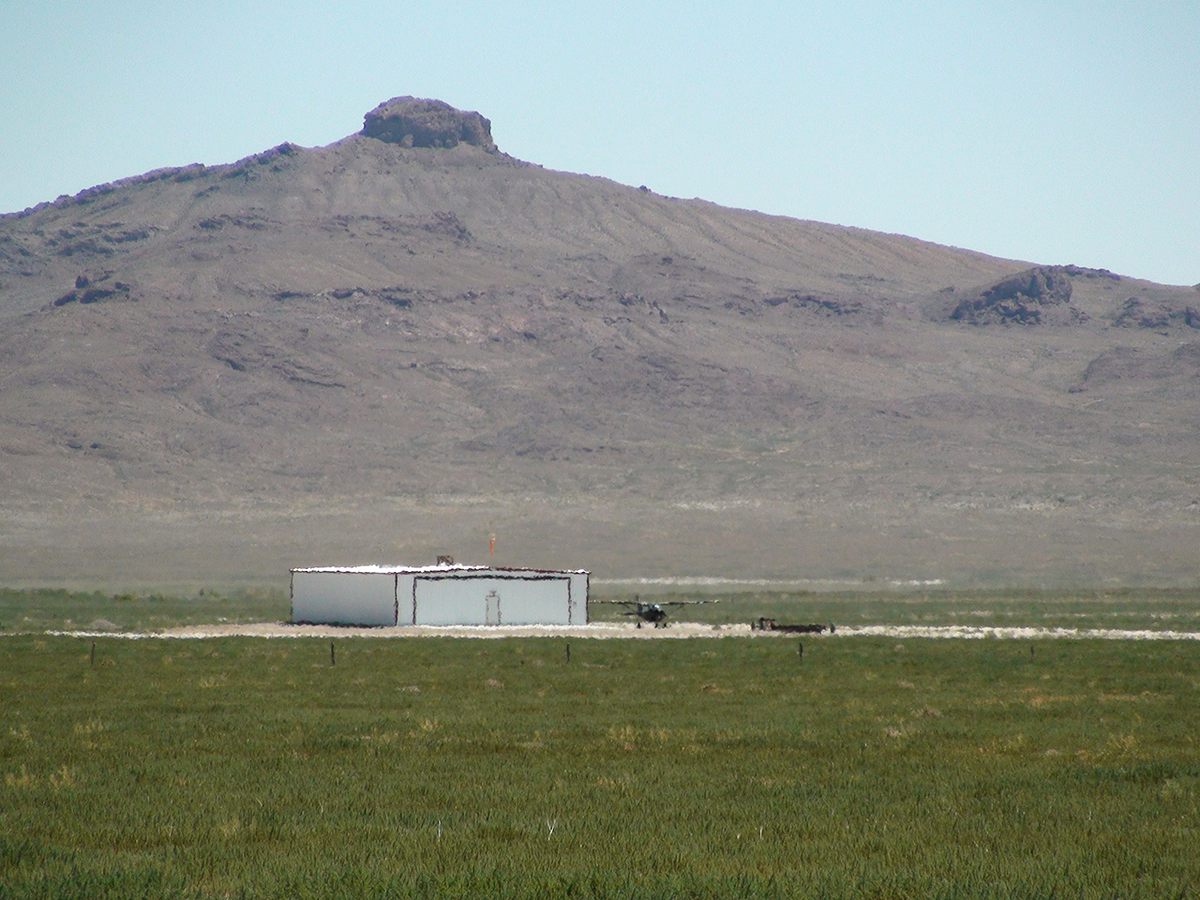
“You know one day it will be a real virus—not like this,” he says, matter-of-factly. “Like a zombie virus. Or you’re going to have an electromagnetic pulse problem, when you won’t have electricity for a year.”
But this doesn’t scare Zdarsky, nor shake his belief in himself. He’ll deal with the inevitable zombie apocalypse, or the electromagnetic problem, as it comes, by pulling away from the root of the issue, which is the root of most issues: other people.
Zdarsky hasn’t always lived alone. He moved to Lucin in 2007, from Long Beach, California, where he worked for 24 years, growing and running an airplane propeller manufacturing business called Ivoprop, which he still owns. Propellers made by Ivoprop are highly regarded in the flying world. They’re mainly used on small personal airplanes, hang-gliders, and novelty aircraft—flying machines with surprising proportions and odd, geometric appendages.
Zdarsky tells the story of Ivoprop, which he founded in 1984, with characteristic understatement. “When you fly—when you’re building something to fly—you kind of need a propellor,” he says. “So it started with that. I had to make my own in Czechoslovakia, so I had some idea how to make it better [than other manufacturers]. So I made it better, and people were buying it. So I made more and more, and that’s how it works.”
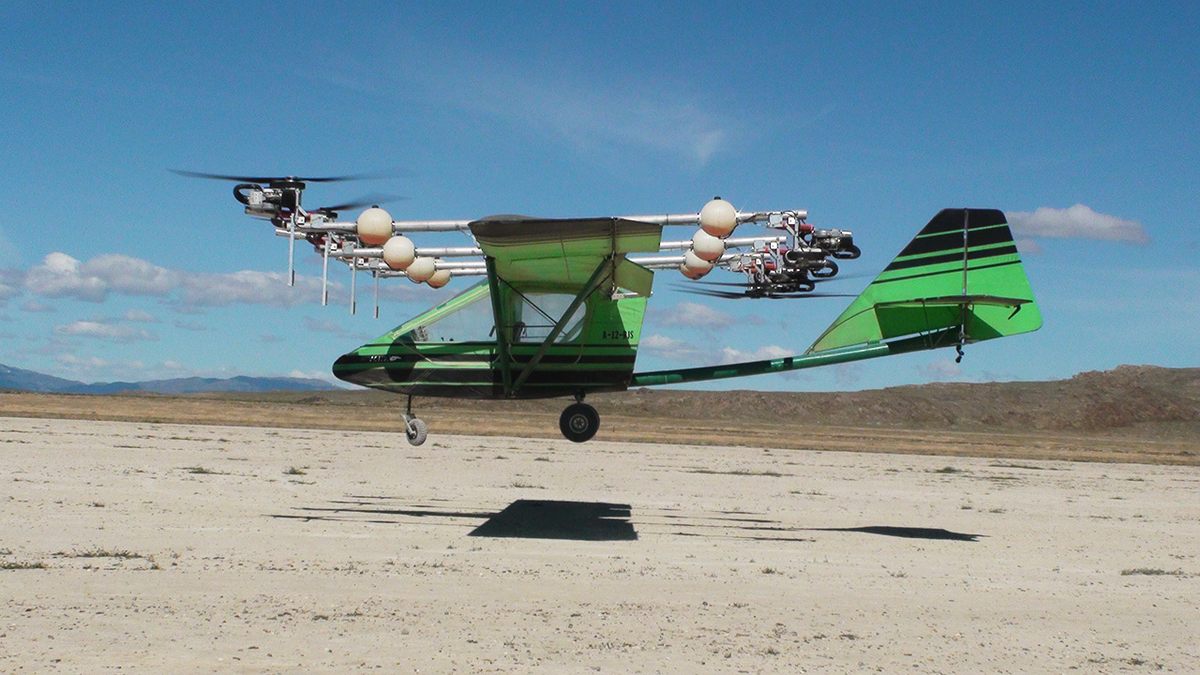
It was hard to tell, at the end of this mini lecture, whether Zdarsky was explaining the growth of his small propeller business or an idealized capitalist system. You make a product better, people buy it, so you make more.
Zdarsky grew up behind the Iron Curtain, in communist Czechoslovakia during the so-called normalization period. In 1968, when he was a toddler living near the city of Hradec Králové, a politician named Alexander Dubcek was promoted to the de facto leadership position in the country: first secretary of the Communist Party of Czechoslovakia. Dubcek advocated for a more liberal society with a free press and diverse political and cultural groups—what he called “socialism with a human face.”
These reforms quickly gained popularity, especially among students, and the year of this sweeping change became known as the Prague Spring. Understandably, the Soviet Union saw it as an existential threat. So on an August night in 1969 it invaded Czechoslovakia, detaining Dubcek and thousands of his supporters. Dubcek did little to resist. He resigned and handed his position to Gustav Husak, who abolished the free press and quashed contrarian political movements. Husak jailed creatives and restricted travel and educational opportunities for the majority of his citizens. The country became more and more dependent on the Soviet Union, and the economy stagnated. This was normalization.
“Well, I mean I guess people can get used to it, and then it’s normal,” Zdarsky said about living in Czechoslovakia at the time. “But you just keep running into all kinds of walls. You cannot really do what I wanted to do.”
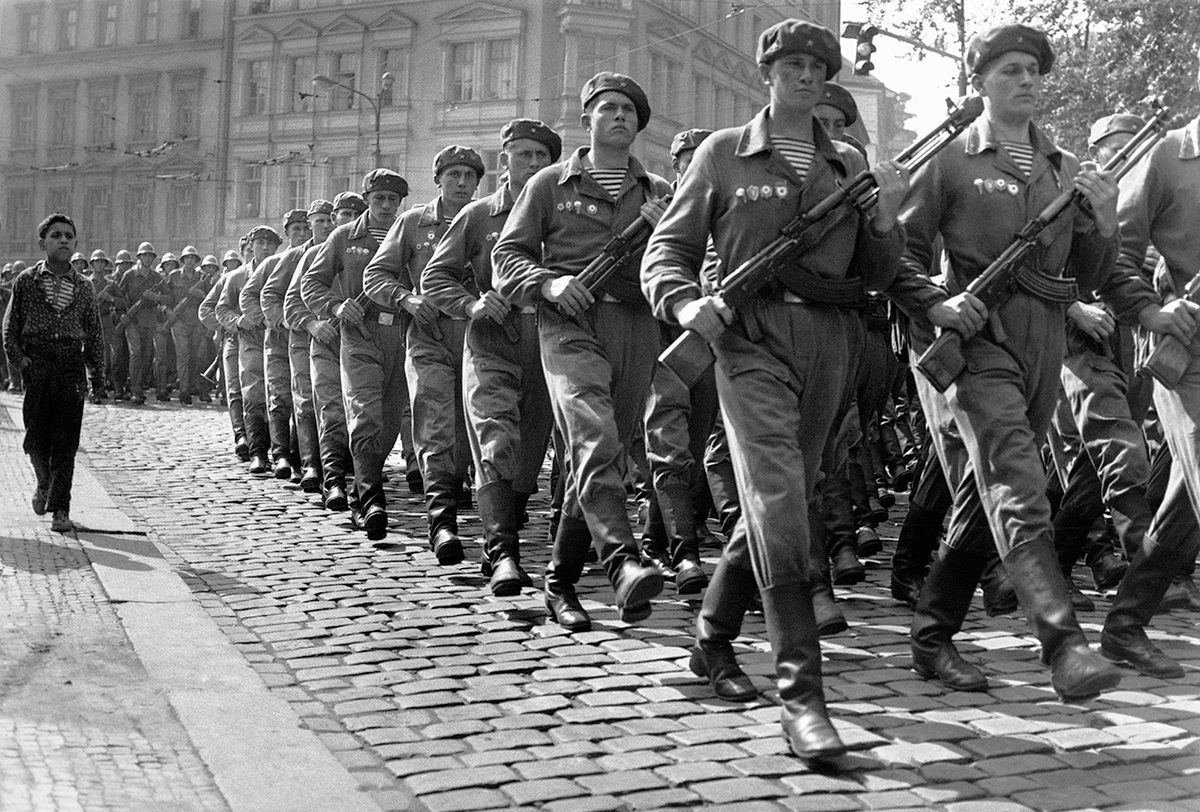
What Zdarsky wanted to do, mainly, was fly. He had started making rudimentary hang-gliders when he was a teenager, with bamboo frames and cloth wings. At 17 he took his first flight. “I was running downhill, and suddenly my feet were not touching the ground. And then I crashed it,” he says, matter-of-factly. He got better slowly, “the hard way. By crashing it and trying to figure out how to not do it the next time, and not killing yourself in the process.”
But regular citizens could not just fly airplanes around Czechoslovakia during normalization. There was nothing normal about that. So Zdarsky built his gliders in secret and took them out to fly in remote areas, covering his back with the alibi of a school project. In 1984 he decided to get out. He had had enough normality.
On an August night he got into his homemade power hang-glider—which he had made from scavenged scrap metal, a wheelbarrow, an engine, and a propeller—and flew toward the Austrian border. It only took him a couple of hours to reach Vienna International Airport. He landed, asked for political asylum, and six weeks later was in America, which, as far as Zdarsky could tell, was the polar opposite of the Soviet Union. In America, he could do what he wanted.
His parents and brother were still in Czechoslovakia. He hadn’t told them he was leaving. He says doing so never even crossed his mind.

Five years later, in 1989, Husak was forced out of office by a peaceful movement called the Velvet Revolution. In 1990 the country had its first democratic elections. In 1993 it split into two: the Czech Republic (now Czechia) and Slovakia. Zdarsky has never gone back, not even to see his family.
His philosophy today is a mix of fatalism and libertarianism. A virus will come, the government will crack down on citizens, the railroad will be pulled up, a town will be abandoned—these things are inevitable. They will just happen.
But on a personal level, Zdarsky can do whatever he likes. Everything is up to him. He can build an airplane, flee to America, leave his old life behind without a second thought. He can start a company, move out, completely alone, to the middle of nowhere, build a helicopter-airplane, and watch TV whenever he wants. When he needs to buy groceries, he can hop into his Cessna Skyhawk and fly 45 minutes to Ogden. When he needs a vacation, he can take the Skyhawk to the Bahamas. Or Alaska.
Way out here, in his airplane hangar man cave in Lucin, Zdarsky is free, despite everything that is out of his control.
* Correction: This story original referred to the Cessna plane as a “Skyhook.”



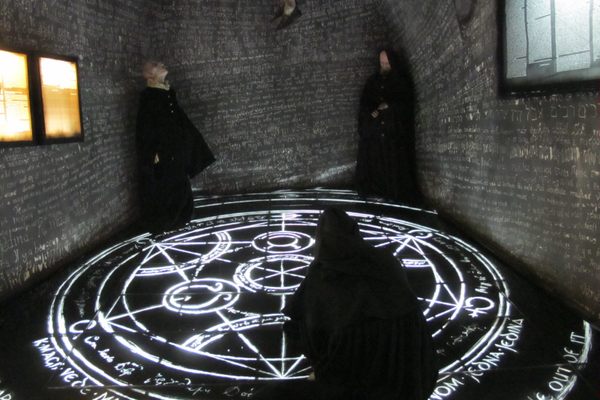

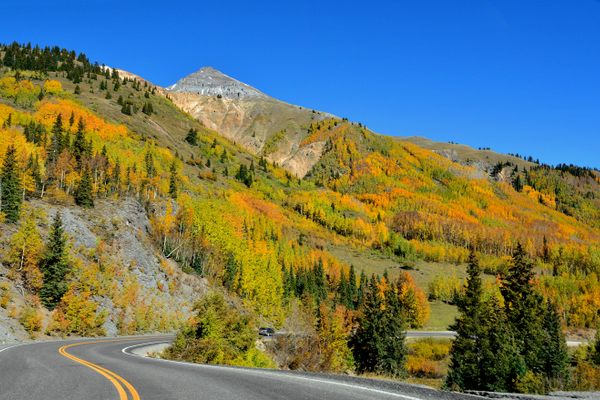








Follow us on Twitter to get the latest on the world's hidden wonders.
Like us on Facebook to get the latest on the world's hidden wonders.
Follow us on Twitter Like us on Facebook